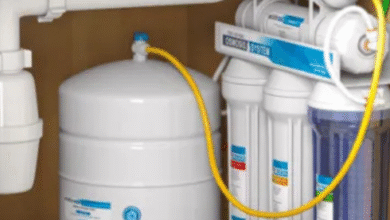The Hidden Switch That Keeps Your AC Alive: Understanding and Checking the Contactor

There’s a moment every homeowner dreads — you walk inside on a blistering day, expecting that familiar rush of cool air, but instead, you’re met with… nothing. Maybe the fan hums for a second and stops. Maybe the system stays silent altogether. You lower the thermostat, check the breaker, and wonder if this is the beginning of an expensive nightmare.
Before panic sets in, here’s a comforting thought: the problem might not be catastrophic. Sometimes, your entire AC can stop working because of one small, overworked part — the contactor.
This little component doesn’t get much attention, but it’s the unsung gatekeeper of your air conditioning system. And the good news? With a bit of patience and understanding, you can learn how to check ac contactor safely and maybe even identify the issue before calling a technician.
What Exactly Is a Contactor, and Why Does It Matter?
Think of the contactor as the “on/off” gate for your AC’s main components. It’s an electrical relay that controls the flow of current to the compressor and condenser fan motor. When your thermostat signals the need for cooling, the contactor pulls in, completing the circuit that lets power reach those parts.
In simpler words — your thermostat tells the contactor, “Hey, it’s hot in here, let’s get to work,” and the contactor flips the switch. When the right temperature is reached, the contactor releases, cutting off power.
But over time, like most parts that deal with electricity and heat, it starts wearing out. Metal contacts get pitted, coils weaken, and eventually, it stops engaging properly. When that happens, your AC can’t get power where it needs it — and your home gets warmer by the minute.
The First Signs Something’s Off
Before you grab tools or call a pro, it helps to know what the symptoms of a failing contactor look like. The most obvious one: your outdoor AC unit doesn’t start. The fan doesn’t spin, the compressor doesn’t hum, and you’re left wondering if the whole system’s gone kaput.
But sometimes, the signs are more subtle. You might hear rapid clicking noises coming from the outdoor unit as the contactor tries — and fails — to engage. Or maybe your system runs erratically, turning on and off more often than usual. In some cases, the outdoor unit keeps running even when the thermostat is off, which means the contactor has welded itself shut — a serious electrical problem that needs quick attention.
Whatever the symptom, the process of checking it is fairly straightforward — if you know what you’re doing and you take precautions.
The Right Way to Approach It
Before you do anything, safety comes first. The contactor controls high-voltage current, and touching the wrong thing could lead to serious injury. Always shut off power at the breaker panel and the outdoor disconnect box before you even think about opening the AC cabinet.
Now, when people ask how to check ac contactor, the process looks something like this:
- Locate it: The contactor is inside your outdoor AC unit, usually behind the service panel. It’s a small, rectangular component with several wires connected to it.
- Inspect visually: Look for burned spots, melted plastic, or pitted metal contacts. If the contactor looks darkened or discolored, that’s already a strong clue it’s failing.
- Test movement: With power off, use a screwdriver (with an insulated handle) to gently press the contactor in. It should move smoothly and spring back when released. If it’s stuck, stiff, or unresponsive, it’s probably time for replacement.
- Electrical testing (optional): If you’re confident using a multimeter, turn the power back on carefully and measure voltage across the coil terminals. You should see around 24 volts when the thermostat calls for cooling. If you don’t, the coil might be dead.
This simple check can often confirm whether the contactor is the culprit behind your AC woes.
How to Read the Clues Like a Pro
Sometimes, even with a working coil, the contacts themselves might be failing. They can pit or corrode over time due to electrical arcing (those small sparks that jump when circuits open and close). That’s when you might hear a faint buzzing from the outdoor unit or experience weak cooling because the system isn’t drawing full power.
Learning how to know if contactor is bad takes a bit of observation. It’s not always dramatic. A contactor can fail gradually — working one day, stuttering the next, then refusing entirely the week after.
If you press the contactor manually (with the power off, of course) and the unit starts running when you restore power, that’s another telltale sign. It means your compressor and fan are fine — they’re just not getting the signal to turn on automatically. That little test alone has saved plenty of homeowners from unnecessary part replacements.
And while replacing a contactor isn’t the hardest repair in the world, it’s not something everyone should tackle. If you’re unsure, it’s safer — and cheaper in the long run — to let a professional handle it. They’ll test related components like the capacitor, compressor, and wiring to make sure nothing else caused the failure.
Why Contactors Fail in the First Place
It’s not always age. Sometimes, it’s environmental. Dust, debris, insects, or moisture can all contribute to contactor failure. Ants, surprisingly, are notorious for crawling inside electrical boxes — drawn by the heat and vibration — and shorting out the contacts.
Then there’s the simple wear-and-tear factor. Every time your system cycles on and off, the contactor engages. Over the years, that can be tens of thousands of cycles. Even the best-quality parts eventually wear down under that kind of use.
Regular maintenance — like annual HVAC tune-ups — can extend its lifespan. A technician will clean, inspect, and test your contactor (along with other components) before the summer heat sets in, helping prevent surprise breakdowns when you need cooling the most.
A Quick Tip for DIY-Minded Homeowners
If you’ve determined the contactor is the problem, replacing it usually isn’t expensive. Most contactors cost under $40, and even the labor to install one is far cheaper than replacing a compressor.
Still, don’t rush it. Make sure to get the correct voltage and amperage rating for your system. Using the wrong type can damage other parts or void your warranty.
And again, if electrical work isn’t your comfort zone — step back. It’s one of those jobs that looks simple but can bite you (literally) if you’re not careful.
When to Call for Help
If you’ve gone through your basic checks and still can’t pinpoint the issue, or if the system keeps tripping breakers even after a new contactor, there’s a good chance something deeper is wrong. Electrical shorts, refrigerant issues, or motor failures can all cause similar symptoms.
A professional technician will run a full diagnostic, testing voltage flow, coil resistance, and even the control board’s output. They’ll make sure your system isn’t hiding a bigger problem behind what looks like a small one.
Wrapping It Up
Your AC’s contactor might not be a flashy part, but it’s the kind of quiet hero you don’t notice until it stops working. Understanding how to check ac contactor and recognizing the early warning signs can help you act fast — before small issues snowball into costly repairs.
So, the next time your air conditioner goes silent on a hot afternoon, don’t panic right away. Step outside, listen, look, and learn. Sometimes, all it takes to bring that cool, familiar hum back is a bit of awareness — and a tiny switch doing its job again.




